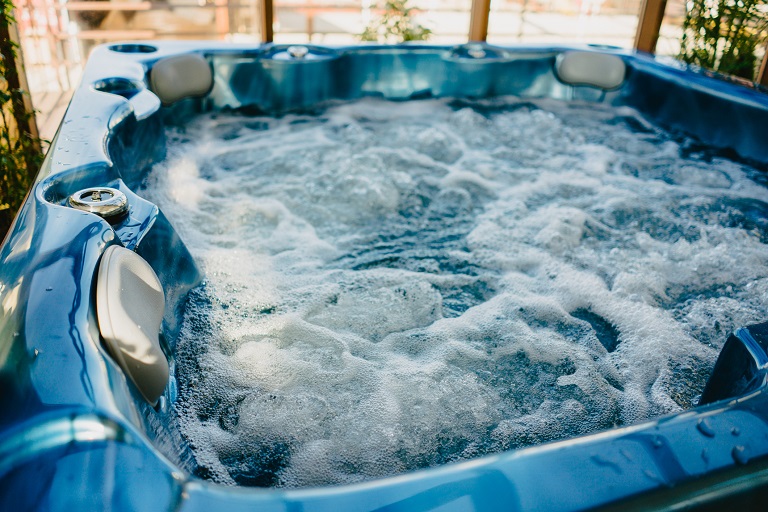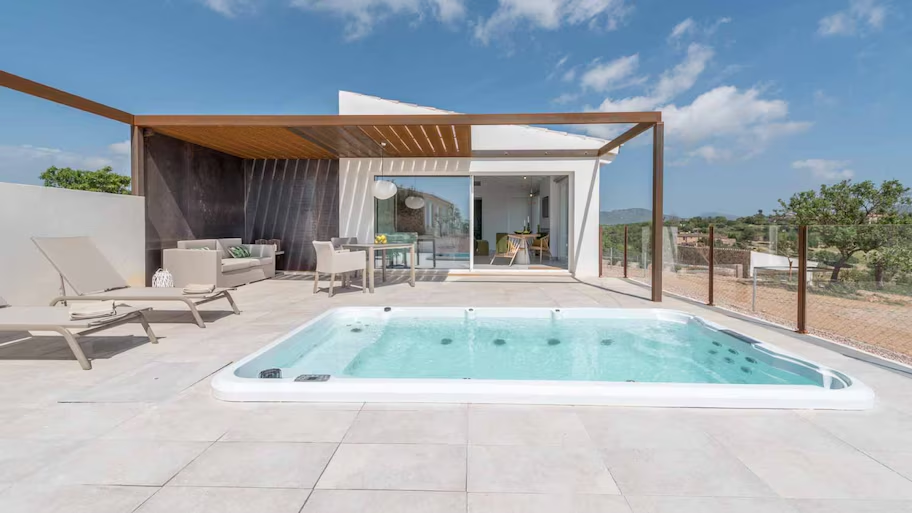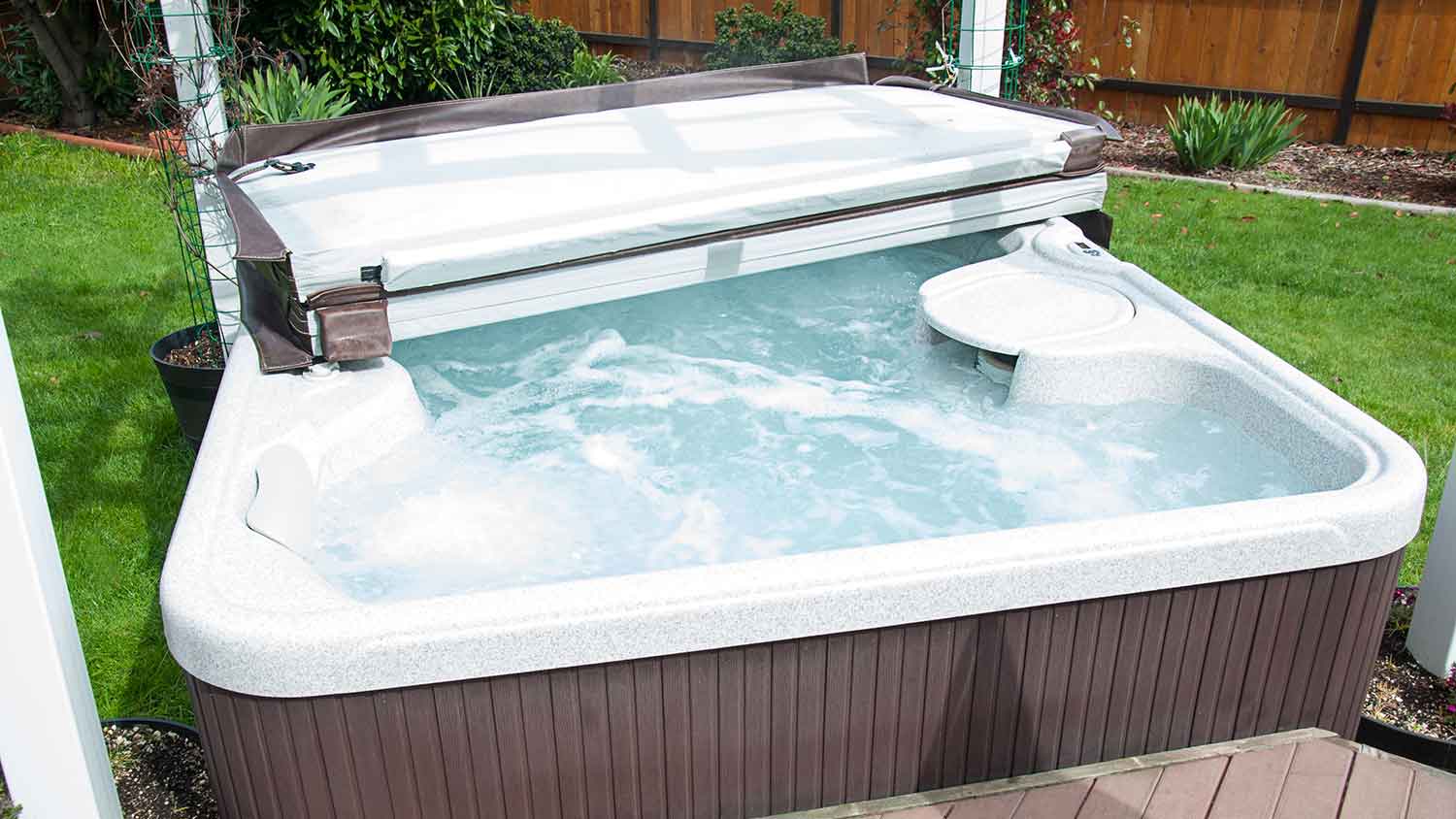
Wondering how much it costs to run a hot tub? Discover average monthly and yearly costs, key factors, and tips to keep your hot tub expenses in check.
Which of these bubbly yard additions is right for you?


Swim spas and hot tubs are similar, but swim spas have more features.
Hot tubs are less expensive than swim spas.
Both swim spas and hot tubs can be installed within a day.
Swim spas and hot tubs last five to 20 years.
Wondering whether a swim spa or hot tub is the best new feature for your yard? Read our swim spa vs. hot tub guide to compare these two social splash zones and find out which hits the mark in categories like cost, ease of installation, overall look, and more.
While swim spas and hot tubs both have heated water and massage jets, there are some key differences between them. Swims spas have extra fitness features, so they can be used for swimming. Hot tubs, meanwhile, are designed mainly for relaxation.

So, what is a swim spa exactly? A swim spa is a type of pool with the hydromassage and heated features of a hot tub. Swim spas are designed to offer therapeutic benefits alongside the ability to do light exercise using the built in current. If comparing swim spas vs. pools, you can tell they are not the same. Though swim spas offer the ability to swim, they are smaller than traditional swimming pools.
| Pros | Cons |
|---|---|
| Quick installation process | High running and maintenance costs |
| Easy to fit in smaller yards | Not as aesthetically pleasing as a regular swimming pool |
| Improve wellbeing through relaxation and fitness | Not ideal for social swimming due to its size |
Best for:
Athletes training for events
People looking to improve their fitness without having to go to a gym
Individuals, couples, and smaller families
One of the main upsides to a swim spa is that it can improve your wellbeing through both its relaxation and fitness features. You can enjoy heat and massage jets and also swim against a built-in current to get your heart rate up.
If time is of the essence, swim spas’ quick installation process is another major pro. Depending on the specific type you choose, it usually takes less than a day to get a swim spa up and running when installed by professionals.
Additionally, if you have a smaller yard, swim spas are much easier to find space for compared to a full swimming pool. Typically, swim spas range from eight to 19 feet in size.
For most people, a comfortable swimming temperature ranges between 78 to 82 degrees Fahrenheit. If installing a heater, talk to your electrician or pool contractor about how this may impact your electrical bill.
One significant downside of swim spas is the high running cost. Of course, this cost will vary depending on where you live and the size and type of swim spa you have, but on average, swim spa maintenance will cost you $50 to $300 per month.
Swim spas are also not as aesthetically pleasing as regular swimming pools: They can appear quite bulky and don’t have an inground option.
Because swim spas are small, they are not ideal for social gatherings beyond a small group of people. The size of the swim spa will determine how many people can enjoy it at once, but you won’t be able to have that picturesque summer pool party that you can have with a traditional pool.

A hot tub is just what it sounds like—a tub of heated water. It uses massage jets and seating to provide a relaxing experience and typically seats two to six people, depending on the size of the tub. The specific types of jets and features vary depending on the type of hot tub.
| Pros | Cons |
|---|---|
| Great for socializing | Require a lot of maintenance |
| Relaxing for the body and mind | Can be expensive |
| Add to the aesthetic of your yard | Use a lot of energy |
Best for:
People experiencing muscle pain or tension
Couples or smaller families
People who prefer small social gatherings
Of all the hot tub benefits, having a comfy place to socialize is one of the most appealing. While it’s only ideal for a small group of people, it offers an intimate and relaxing atmosphere to spend time with your guests. On that note, the fact that they are relaxing for the body and mind is another significant pro. The hot water and massage jets help with tense muscles and give people a chance to relax.
There are many types of hot tubs with different aesthetics. With different light features and exterior designs, you have the opportunity to create a bespoke backyard oasis with the hot tub as your centerpiece.
One of the major cons of hot tubs is their maintenance requirements. You’ll need to test the water a few times per week. Plus, hot tubs should be drained and cleaned every three to four months. This is a pretty significant undertaking. Outside of maintenance, the upfront cost of a hot tub is quite hefty, coming in at around $2,000 to $11,000.
Along with the upfront costs of a hot tub, the cost to run it is high too due to its high energy consumption.
Now that we’ve covered the main differences between a swim spa vs. hot tub, let’s delve into how they stack up against each other in key areas.
When it comes to looks, hot tubs have more aesthetic appeal than swim spas. They typically are available in more chic exterior designs alongside the option to add colored lighting. Swim spas look a bit more clunky.
Swim spas have everything a hot tub can offer and more, hence they outrank them in terms of features. Hot tubs have massage jets, but a swim spa has those along with a built-in current system and the ability to add other fitness features like underwater treadmills.
Up front, a hot tub costs around $2,000 to $11,000, while the cost of a swim spa ranges from $7,000 to $50,000, with most costing an average of $22,500. Clearly, swim spas are a more significant financial undertaking than hot tubs.
It takes about the same amount of time to install a hot tub and a swim spa: typically six to eight hours. While there are some differences between installing a hot tub and swim spa due to their different features and mechanics, the overall process is similar.
Likely due to their overall functional similarities, both swim spas and hot tubs rank pretty equally in terms of ease of repair. In fact, you’d be okay hiring the same laborer to repair a hot tub as you would a swim spa. When you look into hot tub installation pros near you, ask if they have experience working on swim spas.
Swim spas and hot tubs fare similarly in terms of longevity. Both last an average of 10 to 15 years when properly maintained. Some models may last up to 20 years.
From average costs to expert advice, get all the answers you need to get your job done.

Wondering how much it costs to run a hot tub? Discover average monthly and yearly costs, key factors, and tips to keep your hot tub expenses in check.

Wondering about hot tub cover costs? Learn what impacts pricing, compare materials, and discover ways to save on your next hot tub cover purchase.

Hot tub repair costs will depend on the type and severity of the issue. Our cost guide will help you decide whether to DIY or hire a professional.

If your pool feels gritty, you may be wondering "why is my pool filter blowing out sand?" Here are a few reasons why and what to do about it.

Why is my pool pump so loud? Clogs, faulty parts, low water levels, and more can cause a noisy pump. Discover why and what you can do to fix it.

Saltwater hot tubs are a great alternative to traditional options. Discover the pros and cons of saltwater hot tubs to see if one is right for you.